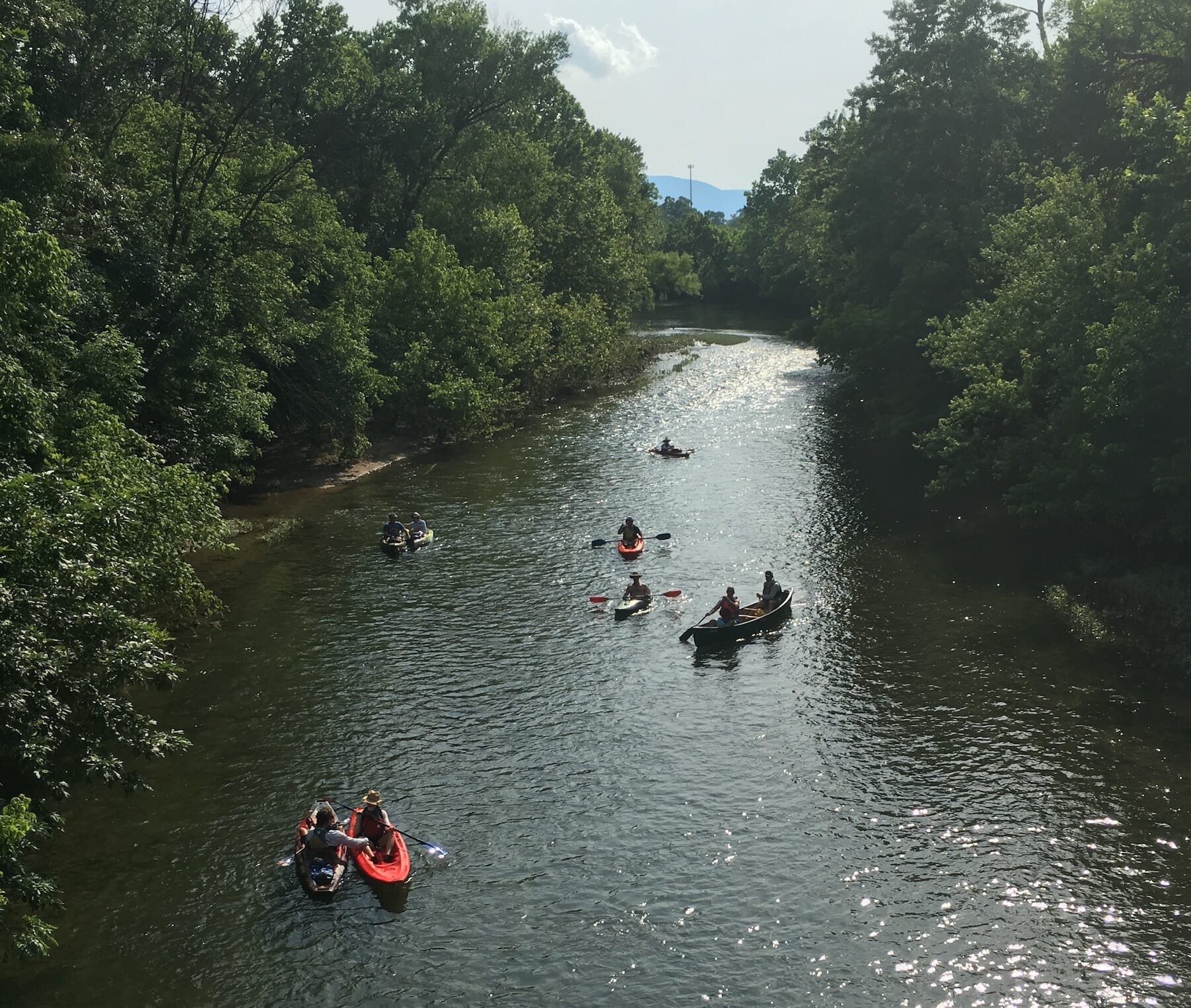By Mark Taylor
Trout anglers love a good hatch, when popping bugs create a feeding frenzy.
I was on Virginia’s J
ackson River recently when a different kind of hatch came off with a fury.
I heard it before I saw it: Happy shouts and the echoing booms of plastic kayaks hitting river rocks.
Soon, a swarm of kayakers appeared upriver, laughing and shouting as they paddled their brightly colored craft through the riffle I’d been fishing.
“Plastic hatch” is typically not a term of endearment. For sure, it can be frustrating to have to take a forced break from fishing, especially when the fishing is good.
But having an increasing number of recreational paddlers on your favorite fishing stream is, for the most part, a good thing.
True, there are some bad apples among them. More than once a floating beer can has provided an early indication that a plastic hatch was forthcoming. On streams that flow through private property, river users who go ashore on posted shoreline can create tension with landowners.
And, surely, more users means less solitude, which is one of things many of us appreciate in our escapes to the river.
But, generally, having more paddlers is like having more anglers. We are all stakeholders, and when we feel connected to places we are more likely to be advocates for those places. When it comes to facing down challenges to access and water quality, more advocates are better than fewer advocates.
My friend Jason and I talked about this on a recent pleasant afternoon when we were part of one of these plastic hatches.
A good-sized group of us had piled into canoes and kayaks for a trip down the Roanoke River, which offers surprisingly scenic paddling even as it cuts through a metro area of nearly a quarter million people.
“When I moved here, nobody used this river like this,” said Jason, who, like me, has been here about two decades. “Now there are people on the river all the time.”
During the float we passed several groups of swimmers, and even a young couple enjoying a leisurely float on tubes.
Several in our group had rented kayaks from an outfitter that opened along the river a few years ago. We stopped during the float for a beer at a riverside pub, and ended the day at a recently opened brewery just 200 yards from the take-out.
That kind of thing exemplifies the microeconomic impact of a clean, attractive waterway. On a macro scale, clean, healthy rivers contribute to a place’s quality of life, which we know is becoming an ever more important driver for a region’s overall economic health.
I’ll still call swarms of kayakers the plastic hatch, but not with disdain.
When a river can support a diverse mix of hatches of both bugs and boats, that’s a good indication that the river is healthy and its users are happy.
Mark Taylor is Trout Unlimited’s eastern communications director. He lives in Roanoke and often takes to the local rivers in his 20-year-old Dagger canoe, which is actually made of Royalex, not plastic.



